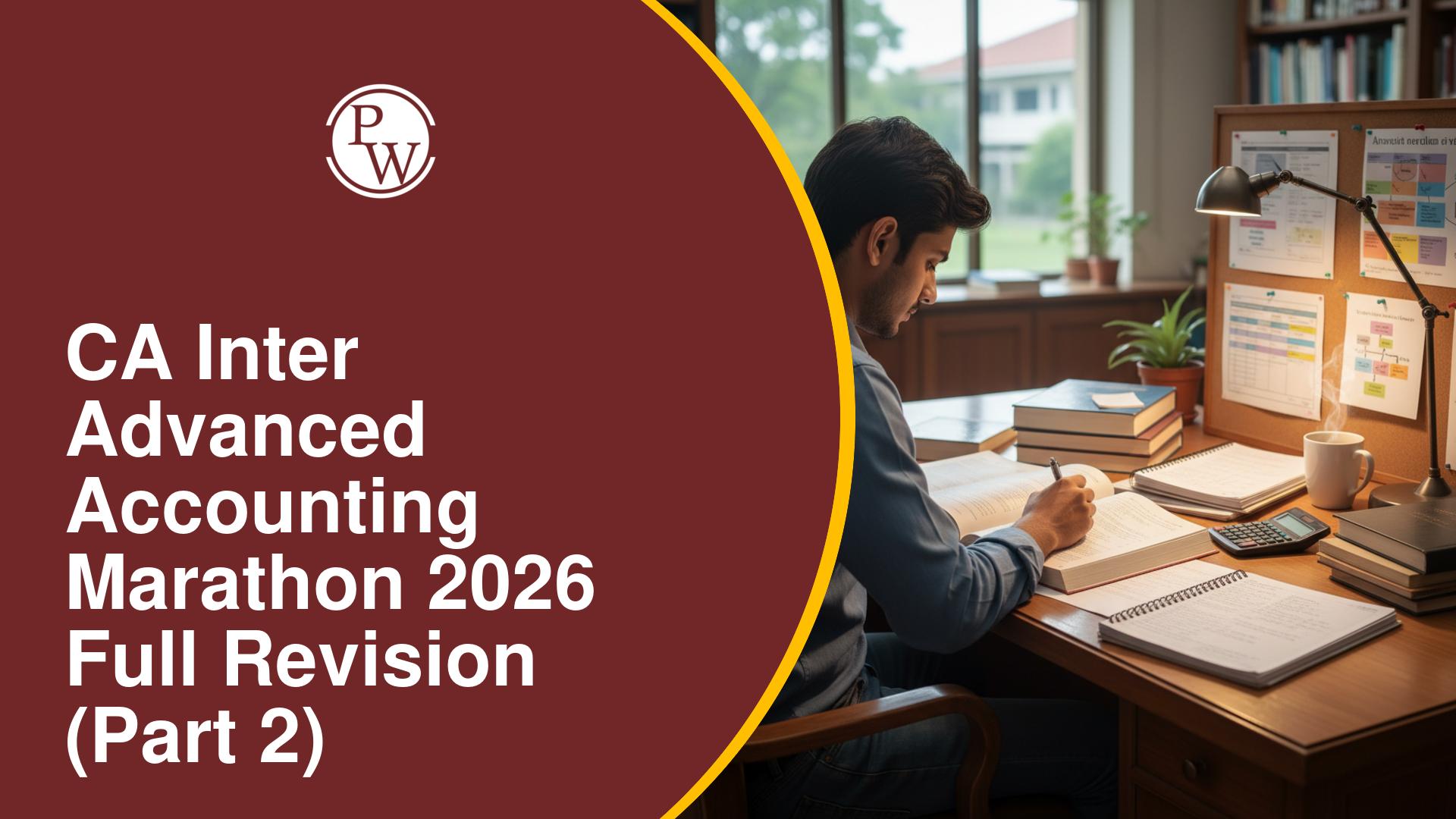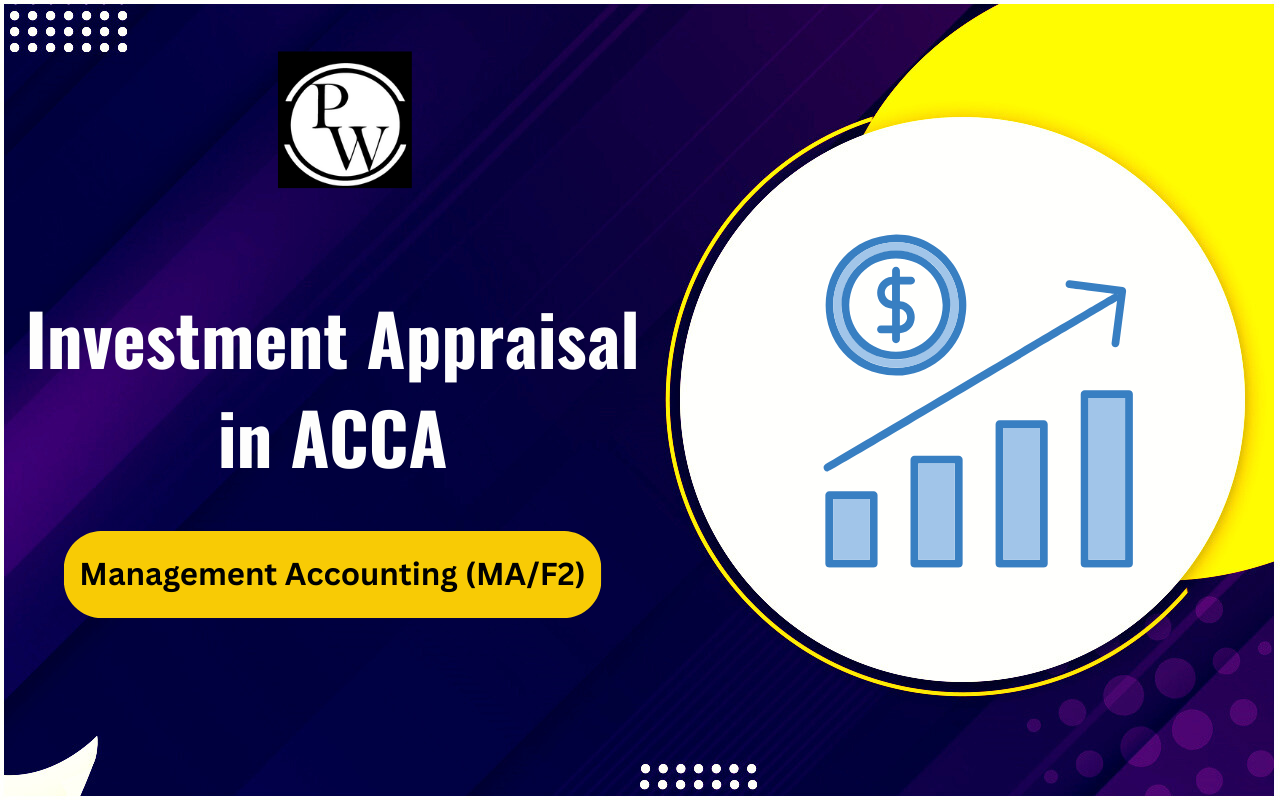
Costing and Management Accounting: Costing and Management Accounting are crucial aspects of financial management that help organizations operate efficiently and make informed decisions. Cost accounting, first of all, deals with figuring out how much it costs to produce or acquire something. It involves various methods to calculate the cost per item. Its main aim is to aid managers in making smart choices. On the other hand, management accounting goes a step further. It focuses on providing useful information for decision-making, planning, controlling costs, and assessing performance. Essentially, it transforms data into valuable insights about a company's activities.
Moreover, cost accounting helps determine the cost of things, while management accounting turns that information into actionable knowledge for better organization management. Both are essential for a company's success. Keep reading this article for more information on the Costing and Management Accounting for CA Exams .
What is Costing and Management Accounting?
Costing and Management Accounting is a specialized branch of accounting that's all about helping organizations make smart decisions and manage their money effectively. It does this by gathering, measuring, and analyzing financial and non-financial info. This helps the folks in charge of a company figure out what moves to make to save money, plan for the future, and keep the business competitive. In a nutshell, Costing and Management Accounting is like a financial GPS, providing accurate, timely, and useful information to guide a company's decision-making and improve its financial health.
Key Highlights of Costing And Management Accounting
Costing and Management Accounting is all about tracking and managing the money in a business. Here are the key points:
- Cost Accounting: This is like a money detective job. It involves figuring out how much it costs to make things or provide services in a company. It helps to know where the money is going and how to control costs.
- Management Accountants: These are the financial planners of the company. They make budgets (plans for spending money) and work with other teams to make sure the company sticks to those plans. They also keep an eye on how well the company is doing financially.
- Performance Analysis: Management accountants look at numbers and other information to see how different parts of the business are doing. They check if products or projects are making or losing money.
- Helping Decision-Makers: They provide important info to the big bosses so they can make smart decisions for the company. Think of them as financial advisors.
- Strategic Planning: They're also involved in the big-picture stuff. They help the company plan for the future by studying if new ideas or investments are financially sound.
So, Costing and Management Accounting is all about money management in a company, from tracking costs to helping the company make smart financial decisions.
Types of Costing and Management Accounting Courses
Prospective students can refer to the table below to discover the various types of Costing and Management Accounting Courses available:
| Course Level | Details |
| Undergraduate Courses | Accounting Bachelor's Degree Many universities and institutions offer an accounting bachelor's degree program that includes courses in cost accounting, managerial accounting, and financial management. |
| Postgraduate Courses | A master's degree program in management accounting or a similar discipline provides advanced training in cost and management accounting, budgeting, performance assessment, strategic planning, and decision-making. |
| Certification Programmes | Several professional accounting associations offer cost and management accounting certification programs. For example, in the United States, the Institute of Management Accountants (IMA) offers the Certified Management Accountant (CMA) credential. |
| Short-term courses | Many institutions and professional organizations provide short-term courses and workshops in specific areas of cost and management accounting. Cost control, budgeting approaches, activity-based costing, performance assessment, and cost analysis are some of the subjects covered in these courses. |
| Online Learning Platforms | Cost and management accounting courses are available through a variety of online learning venues. These platforms offer time and accessibility flexibility, allowing users to learn at their own speed. Online courses provide a wide range of cost and management accounting topics, from introductory to advanced. |
This table provides a clear overview of the different course options without any copied content.
Branches of Costing and Management Accounting
In the world of Costing and Management Accounting, there are various branches that work together to provide valuable information and make decision-making in organizations easier:
- Cost Accounting: This is like the detective work of accounting. It helps figure out how much it costs to make things or provide services. It uses different methods like job costing, process costing, and others to track these costs.
- Managerial Accounting: This is all about providing financial info to people inside the company, especially the managers. They use this info to plan, make decisions, and keep things on track. It involves budgeting, comparing plans to actual results, and more.
- Budgeting and Forecasting: These are like roadmaps for a company's finances. They help plan where the money should go, set targets, and see if the actual spending matches the plan.
- Decision Analysis: Think of it as the math behind decision-making. It uses numbers to help choose the best options. Methods like cost-benefit analysis and others help in making smart decisions.
- Strategic Cost Management: This is about saving money in a smart way. It looks at costs in the big picture and tries to cut them in ways that help the company's long-term goals.
- Performance Measurement: Imagine it as a report card for the company. It measures how well different parts of the company are doing. Key numbers and scores help keep track of performance.
- Financial Analysis and Reporting: This is like telling a story with numbers. It interprets financial info and shares it with people inside and outside the company. It's important for making decisions and showing how well the company is doing.
So, in Costing and Management Accounting, these branches team up to provide information that guides decisions and keeps the organization on the right financial track.
Basic Concepts of Costing and Management Accounting
Let's break down some important concepts in Costing and Management Accounting:
- Cost: Cost is the money spent on making or getting products or services. It includes both direct costs, like the price of materials and labor, as well as indirect costs, like overhead expenses, used in the production process.
- Profit: Profit is the extra money a company makes when it earns more than it spends. It's a key measure of how well a company is doing financially. Analyzing profit helps to see if cost-cutting and making more money strategies are working.
- Budget: Think of a budget as a money plan. It's like making a list of how much money a company expects to earn and spend during a specific time. Budgets help compare these plans to what actually happens, control spending, and achieve financial goals.
- Cash Flow: Cash flow is like a company's bank account report. It tracks the money coming in and going out over a certain period. If more money is coming in, it's positive cash flow, which is good. If more money is going out, it's negative cash flow, which can be a problem. Monitoring cash flow is vital for managing money and paying bills on time.
-
Financial Statements:
These are official financial reports that give a snapshot of how a company is doing. There are three main types:
- Income Statement (Profit and Loss): Shows how much money the company made (revenue) and how much it spent (expenses) to figure out profit or loss.
- Balance Sheet: It's like a company's financial snapshot, showing what it owns (assets) and what it owes (liabilities) at a specific time.
- Cash Flow Statement: Details the movement of money in and out of the company, helping to understand where cash is coming from and where it's going.
These concepts help businesses keep track of their money, make smart decisions, and show their financial health to others.
Costing and Management Accounting Syllabus 2023
Check the below table for a quick overview of the Costing and Management Accounting Syllabus :
| Costing and Management Accounting Syllabus 2023 | |
| Semester-1 | Subjects |
| Semester-1 |
|
| Semester-2 |
|
| Semester-3 |
|
| Semester-4 |
|
| Semester-5 |
|
| Semester-6 |
|
Costing and Management Accounting Exam Pattern 2023
The CA Intermediate Cost and Management Accounting exam in 2023 is focused on theory. There are 5 questions in the paper, and everyone must answer at least one of them. When applying for the exam, students can pick to write it in either English or Hindi.
| Costing and Management Accounting Exam Pattern 2023 | |
| Particulars | Details |
| Paper Type | Theory-based |
| Total Marks | 100 |
| Time Limit | 3 hours |
| Number of Questions | 5 |
| Compulsory Questions | 1 |
| Language Options | English and Hindi |
What Students will Learn in Costing and Management Accounting?
Cost and Management Accounting is all about providing important information to help organizations make decisions, analyze costs, plan, and stay in control. It involves understanding various concepts and tools used in this field to make smart business choices. Here are some key things you'll learn in Cost and Management Accounting:
- Cost Basics: You'll grasp terms like direct costs, indirect costs, fixed costs, and variable costs. These help you understand how expenses work and how to allocate them.
- Costing Systems: You'll become familiar with different ways to calculate costs, like job costing or activity-based costing. These methods help figure out the cost of products, services, or activities.
- Cost-Volume-Profit Analysis: This helps you understand how changes in costs, sales volume, and profits are connected. It's crucial for making decisions that affect a company's performance.
- Budgeting and Forecasting: You'll learn how to create budgets, predict future results, and compare them to actual performance. This helps in planning and evaluating how well a company is doing.
- Cost Estimation: You'll be able to estimate costs using various methods. This is valuable for decisions like whether to make or buy, pricing products, or choosing what to produce.
- Cost Control: You'll discover ways to manage costs, increase efficiency, and reduce organizational expenses. It involves analyzing cost differences and implementing cost-cutting strategies.
- Financial Frameworks: There are some important financial models used in Cost and Management Accounting, such as Activity-Based Costing (ABC), Cost-Volume-Profit (CVP) Analysis, Standard Costing, Target Costing, and Theory of Constraints (TOC). These frameworks help in decision-making and cost management.
In essence, Costing and Management Accounting equips you with the knowledge and tools to understand and manage costs effectively, make informed business decisions, and improve the financial performance of organizations.
Tips for Preparing Costing and Management Accounting
Getting ready for the CA Inter Paper 3 Costing and Management Accounting requires a well-structured approach and consistent dedication. By following these practical suggestions, you can improve your chances of success in the exam:
- Start with the Easy Parts: Kick off your preparation by tackling the less challenging chapters first. These include topics like Operating Costing, Marginal Costing, Materials, Budgetary Control, Contract, and Integrated System and reconciliation. This way, you can save more time for the tougher subjects.
- Deep Dive into ICAI Study Materials: Dive into the study materials provided by ICAI for CA Inter. Study the concepts thoroughly and practice them repeatedly. Regularly revisiting these materials is essential. Try setting time limits when practicing problem-solving to boost your speed and efficiency.
- Create Chapter-wise Notes and Solutions: Keep well-organized notes and solutions for each chapter. These will come in handy during revision and provide a quick recap when needed.
- Regularly Assess Your Progress: Continuously check your preparation and assess if you are ready for the exam. Determine your areas for improvement and make the appropriate corrections. Completing the syllabus well in advance gives you plenty of time for revision.
- Take Mock Test Papers: Attempt mock test papers designed for CA Inter. This helps you get used to the exam format, question types, and the level of difficulty in problem-solving. Mock tests are also great for identifying and rectifying mistakes before the actual exam.
- Avoid Selective Study: Don't limit your study to just important or preferred chapters. Each section is crucial since any part can feature prominently in the exam. Give equal attention to every chapter.
- Finish the Syllabus Early: Ensure that you cover all the chapters well before the exam date. Avoid starting new topics right before the exams to reduce the risk of being unprepared.
By following these strategies, you can better prepare for your CA Inter Costing and Management Accounting paper.
How has Costing and Management Accounting developed and changed throughout History?
Costing and Management Accounting has come a long way due to changes in how businesses operate, technological improvements, and companies' evolving needs. Here are some key changes:
- The shift from Cost Accounting to Management Accounting: Initially, it was all about figuring out costs. But now, it's not just about costs; it's about providing information for decisions, evaluating performance, planning strategies, and keeping control. It's become broader and more focused on helping management.
- From Looking Back to Looking Forward: In the past, accounting mainly used historical data. Now, it's also about predicting the future. Things like budgeting and forecasting help plan for what's coming.
- Importance of Non-Financial Info: It's not just about money anymore. Non-financial stuff like customer happiness, employee engagement, environmental impact, and quality are also important. Management accountants use these and financial data to get a full picture of a company is performance.
- Tech Revolution: Technology has had a huge impact. Computers, fancy software, and systems like ERP (Enterprise Resource Planning) make collecting and handling data much easier and more accurate. This means quicker and more detailed info for making decisions and planning strategies.
So, Costing and Management Accounting has evolved to be more about helping businesses make smart decisions, look to the future, consider non-financial factors, and use technology for better information.
How Costing and Management Accounting Used in Different Industries?
Different industries use Costing and Management Accounting tools to handle their money, make decisions, and check how they're doing. Here are some examples of how these tools are used in various fields:
| Industry | Application |
| Manufacturing | Cost and management accounting are critical in the manufacturing industry. Standard costing, activity-based costing (ABC), and lean accounting are methods for measuring and controlling production costs, assessing product profitability, identifying process inefficiencies, and supporting continuous improvement projects. |
| Retail | Cost and management accounting are used in the retail industry to control inventory costs, examine pricing strategies, and measure the profitability of products, brands, or shop locations. |
| Service | The service industry uses cost and management accounting to assess the profitability of service offerings, control expenses, and make price decisions. Management accounting aids decision-making in resource allocation, capacity planning, and service quality enhancements. |
| Healthcare | Management accounting aids in assessing the financial viability of healthcare services, analyzing resource utilization efficiency, and assisting decision-making in areas such as medical equipment investment, facility expansion, and service pricing. |
| Financial Services | Cost and management accounting are used in the financial services business to control expenses, evaluate profitability, and support investment decisions. Techniques such as activity-based costing (ABC) and transfer pricing assist in allocating expenses across departments or business units. |
Furthermore, the study of Costing and Management Accounting is a critical aspect of preparing for CA exams. This subject provides essential tools and techniques for assessing and controlling costs, making informed business decisions, and ensuring efficient resource allocation within organizations. By mastering these concepts and techniques, aspiring CAs can enhance their ability to analyze financial data, support strategic decision-making, and contribute to the financial success of businesses. Continuous practice, a strong understanding of the fundamentals, and keeping up-to-date with the latest developments in the field are key to success in CA exams and in a future career in accounting and finance.
Costing and Management Accounting FAQs
How should I study for CA Inter Cost and Management Accounting?
Is Costing Difficult in CA Inter?
What is Cost and Management Accounting?
What is the exam pattern for CA Intermediate Paper 3 Cost and Management Accounting?
Who is the best coaching provider for CA Inter Cost and Management Accounting?








